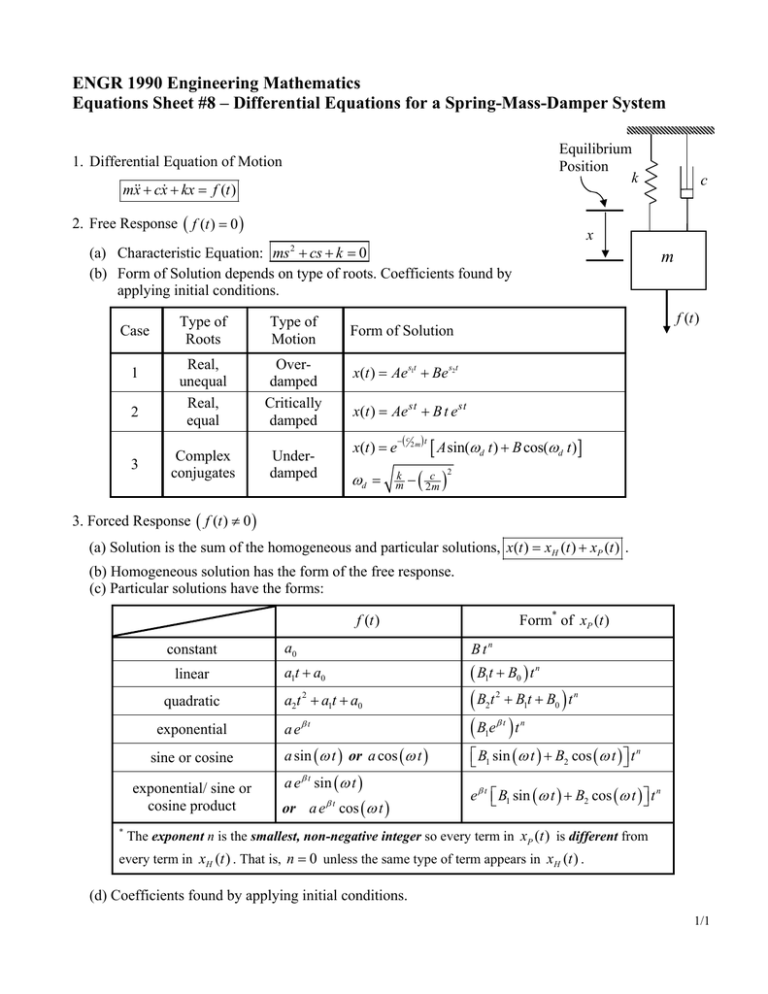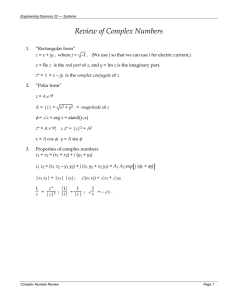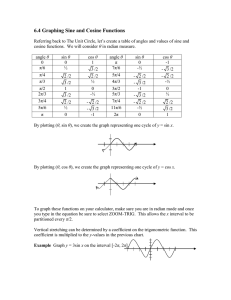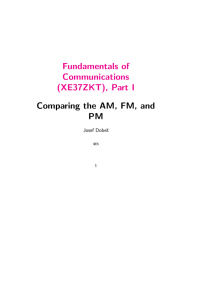Document 14435894
advertisement

ENGR 1990 Engineering Mathematics Equations Sheet #8 – Differential Equations for a Spring-Mass-Damper System Equilibrium Position k 1. Differential Equation of Motion mx + cx + kx = f (t ) 2. Free Response ( f (t ) = 0 ) x (a) Characteristic Equation: ms + cs + k = 0 (b) Form of Solution depends on type of roots. Coefficients found by applying initial conditions. 2 Case 1 2 3 Type of Roots Type of Motion Real, unequal Real, equal Overdamped Critically damped Complex conjugates Underdamped c m f (t ) Form of Solution x(t ) = Ae s1t + Be s2t x(t ) = Ae st + B t e st − c t x(t ) = e ( 2 m) [ A sin(ωd t ) + B cos(ωd t )] ωd = k m − ( 2cm ) 2 3. Forced Response ( f (t ) ≠ 0 ) (a) Solution is the sum of the homogeneous and particular solutions, x(t ) = xH (t ) + xP (t ) . (b) Homogeneous solution has the form of the free response. (c) Particular solutions have the forms: Form* of xP (t ) f (t ) constant linear quadratic exponential sine or cosine exponential/ sine or cosine product * B tn a0 ( B1t + B0 ) t n a1t + a0 a eβ t (B t + B t + B )t (B e )t a sin (ω t ) or a cos (ω t ) ⎡⎣ B1 sin (ω t ) + B2 cos (ω t ) ⎤⎦ t n a2t 2 + a1t + a0 2 2 1 βt n 0 n 1 a e β t sin (ω t ) or a e cos (ω t ) βt e β t ⎡⎣ B1 sin (ω t ) + B2 cos (ω t ) ⎤⎦ t n The exponent n is the smallest, non-negative integer so every term in xP (t ) is different from every term in xH (t ) . That is, n = 0 unless the same type of term appears in xH (t ) . (d) Coefficients found by applying initial conditions. 1/1






